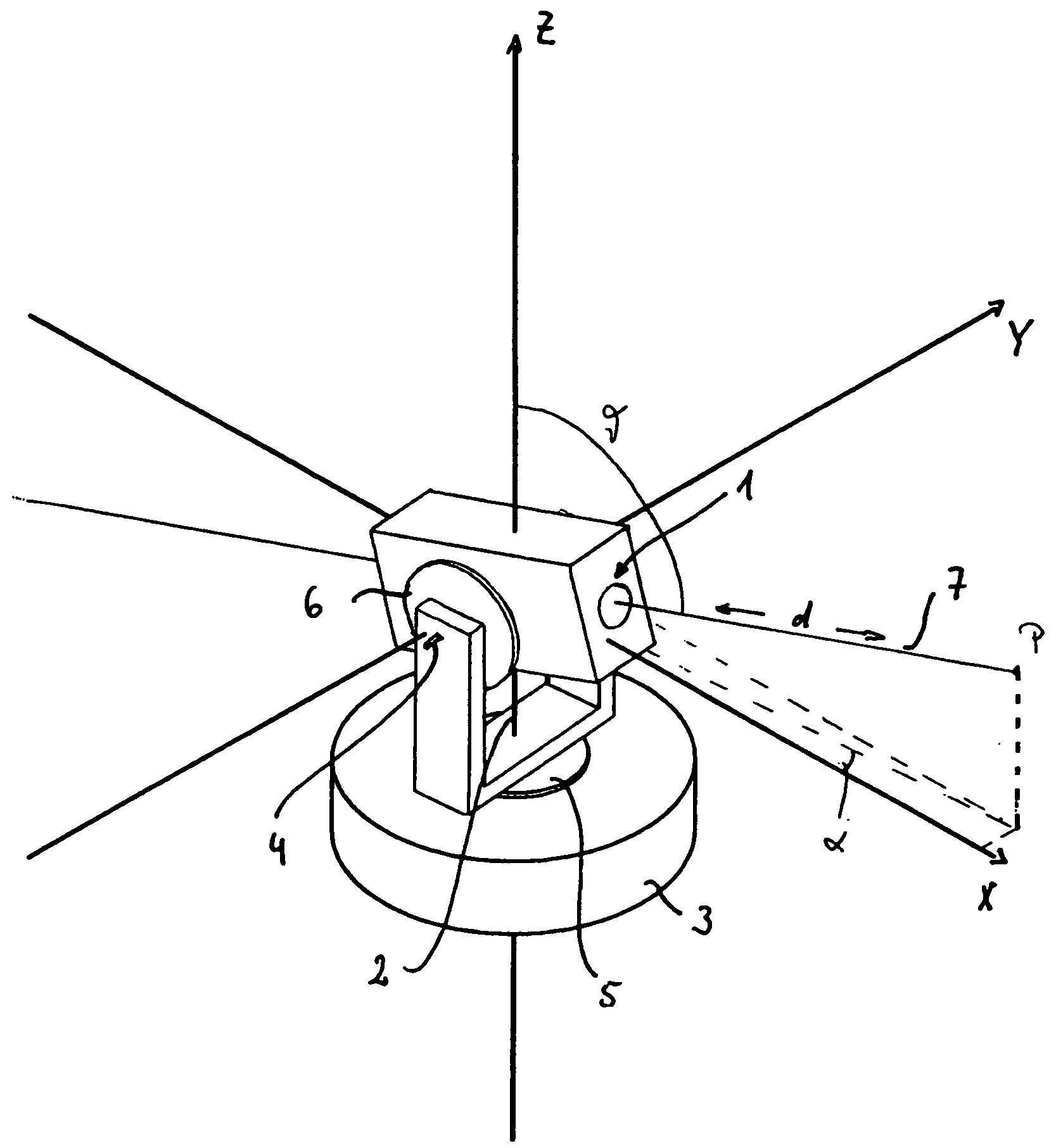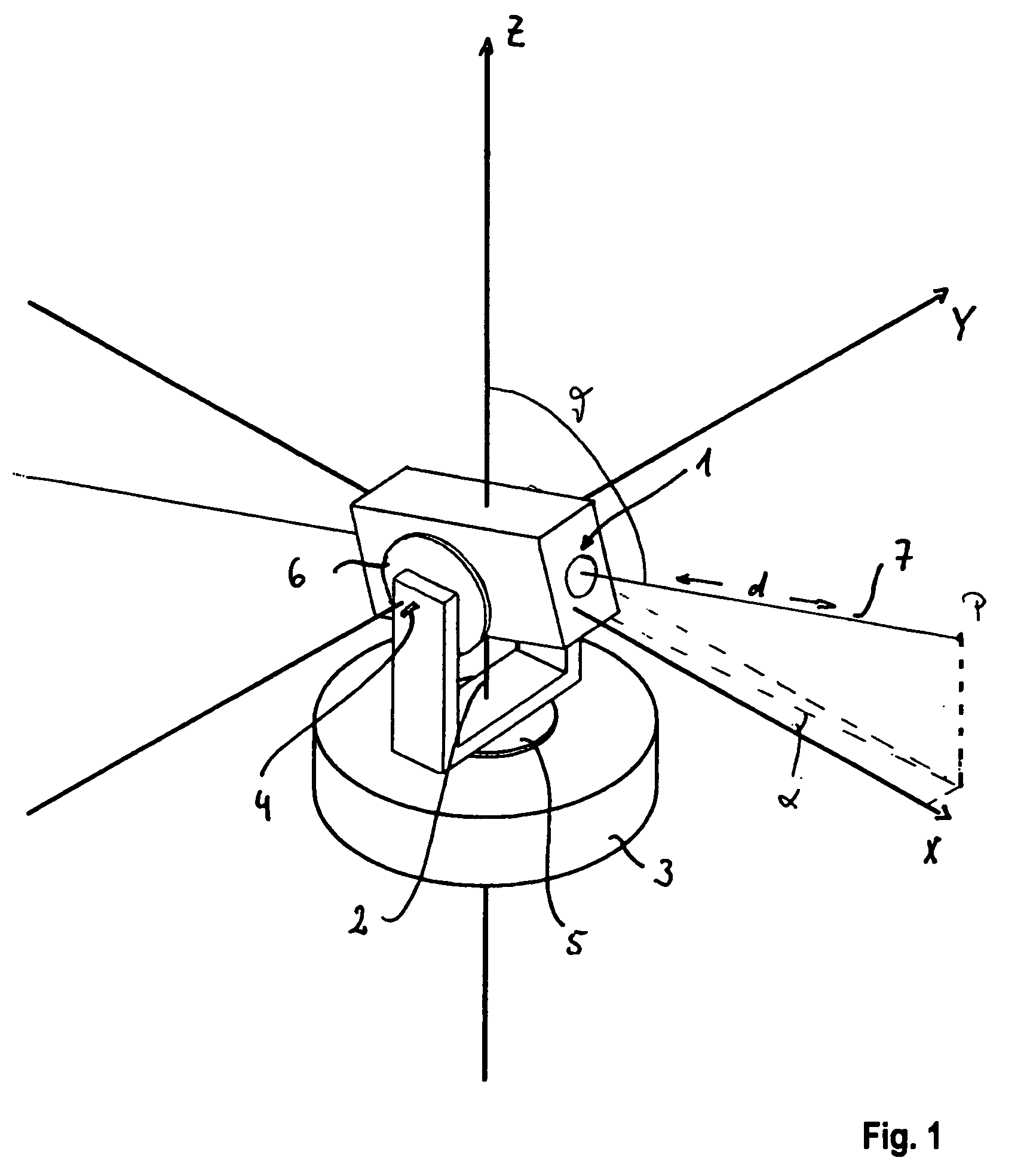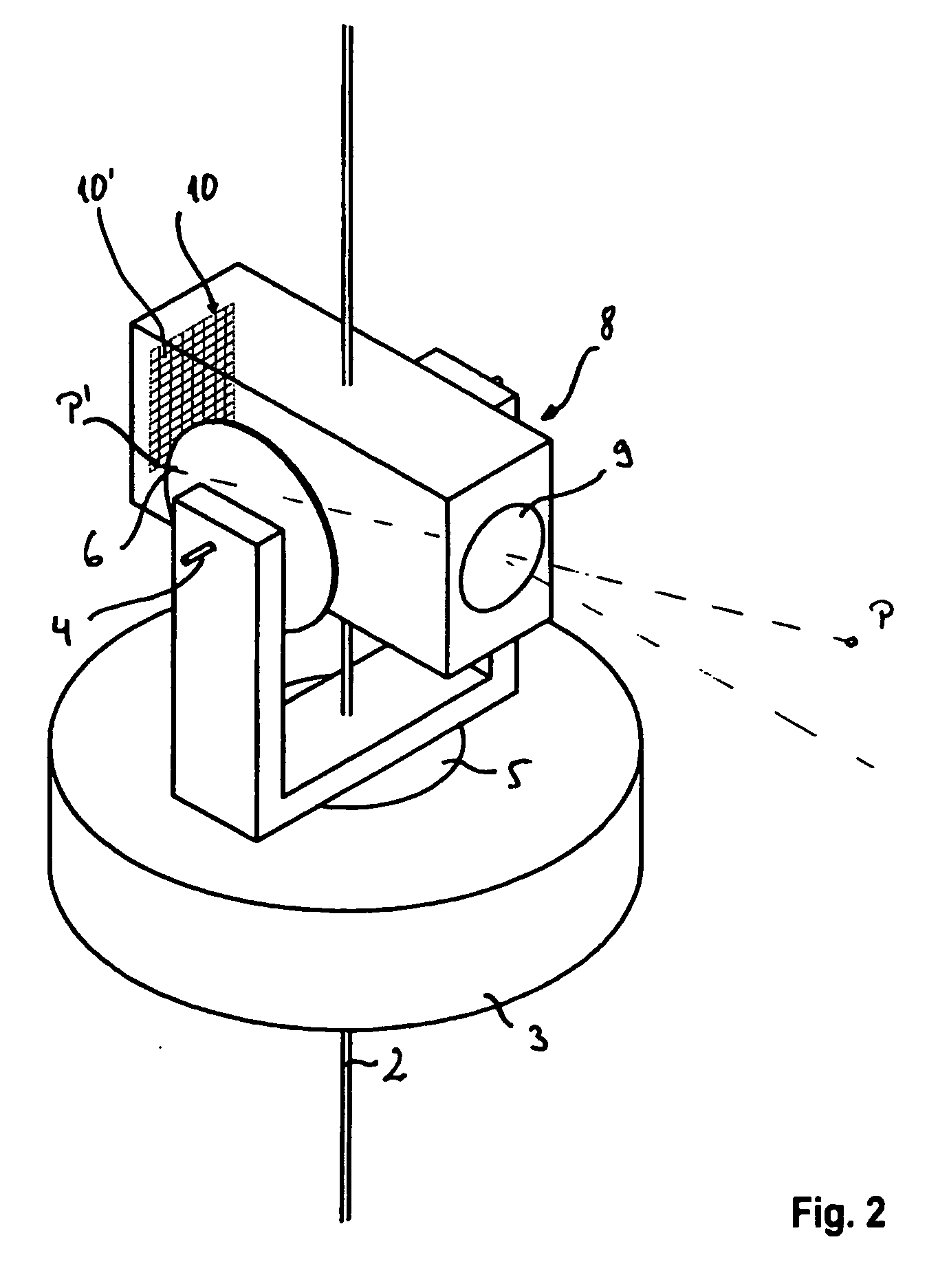Surveying Instrument and Method of Providing Survey Data of a Target Region Using a Surveying Instrument
- Summary
- Abstract
- Description
- Claims
- Application Information
AI Technical Summary
Benefits of technology
Problems solved by technology
Method used
Image
Examples
Embodiment Construction
[0158]In the exemplary embodiments described below, components that are alike in function and structure are designated as far as possible by alike reference numerals. Therefore, to understand the features of the individual components of a specific embodiment, the descriptions of other embodiments and of the summary of the invention should be referred to.
[0159]A video-tacheometer 11 according to a first embodiment of the invention is shown in FIGS. 3 to 5 in a schematic and simplified manner.
[0160]An alidade 12 is arranged on a base element 13 of a tripod 14 serving as stand for the video-tacheometer 11. The alidade 12 is rotatable about a vertical axis 15, which is oriented vertical to the ground if the video-tacheometer 11 is correctly oriented with respect to ground. The alidade 12 carries a telescope unit 16, which comprises in a housing 17, a finder camera 18 having a wide field of view and a telecamera 19. The telescope unit 16 is rotatable about a tilting axis 20, which is ort...
PUM
 Login to View More
Login to View More Abstract
Description
Claims
Application Information
 Login to View More
Login to View More - R&D
- Intellectual Property
- Life Sciences
- Materials
- Tech Scout
- Unparalleled Data Quality
- Higher Quality Content
- 60% Fewer Hallucinations
Browse by: Latest US Patents, China's latest patents, Technical Efficacy Thesaurus, Application Domain, Technology Topic, Popular Technical Reports.
© 2025 PatSnap. All rights reserved.Legal|Privacy policy|Modern Slavery Act Transparency Statement|Sitemap|About US| Contact US: help@patsnap.com



